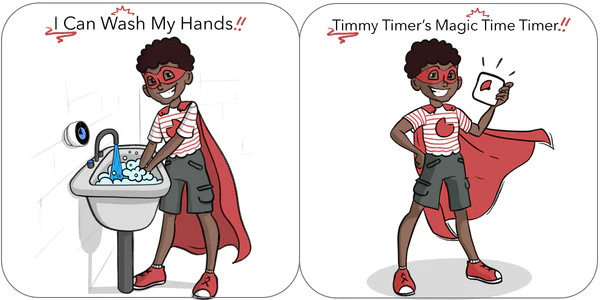Social stories are a social learning tool developed to support information exchanges between parents, professionals, and people with autism of all ages. In the late 1980s, Carol Gray created social stories while working as a teacher in Michigan public schools to provide support for her students with autism by sharing “information with them that they seemed to be missing, information that so many of us take for granted.” Many of these stories had a positive impact in her students’ responses to daily events and interactions.
Over the years, social stories have broadened their appeal as a helpful tool for understanding new concepts, learning behavior expectations, or preparing for transitions, and have been shown to be effective in supporting people not only with autism, but also those with ADD, ADHD, social anxiety, and in early childhood development.
What are the benefits of social stories?
Social stories can support mutual understanding between parents, professionals, and caregivers and the individuals the social stories are intended for. Additionally, social stories can help individuals to:
- Explore what to expect in difficult or unfamiliar situations and how to respond
- Feel confident in following routines
- Learn expectations of behavior or how to adhere to certain rules
- Understand the thoughts, emotions, and behaviors of others
- Increase self-regulation and self-awareness skills
What makes a social story?
A social story is a visual aid that is used to help interpret and prepare a child for a new social situation—what to do or how they might feel. It portrays a particular social event in a clear pictorial way and explores how that situation may unfold. By setting up the situations and outlining possible actions and behaviors that may follow, social stories allow the individual to explore how to act and behave in that given situation. With the setting outlined, as well as a roadmap created, social stories provide insight and understanding for the individual and provide guidance in how to manage interactions. Take a look at some social stories here.
When to use social stories?
Social stories were first developed to help individuals navigate a context, skill, achievement, or concept and manage responses to the myriad of distractions around us. With their effectiveness demonstrated, social stories have been created to assist with other situations as well. Parents, professionals, and caregivers often use social stories with kids to help them to explore and gain confidence about going into new situations or moving through transitions that may be difficult at first to understand.


